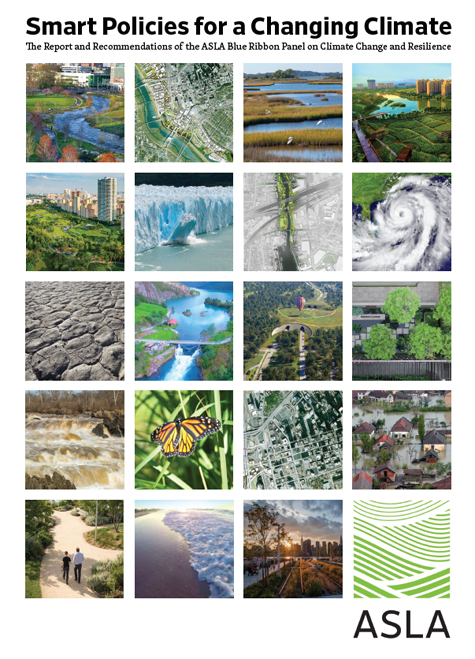Professional Practice
Climate Change Mitigation: Cities
Download Report:
Per-capita emissions in dense urban areas tend to be lower than national averages. For example, in 2015, the average resident of New York City had an annual carbon footprint of (mtCO2e), compared to the national average of 19 mtCO2e per capita. CitiesˇŻ per capita efficiencies are largely due to the built environment: . However, cities are still responsible for due to the sheer number of urbanites, making efforts to reduce urban emissions vital.
While improving building efficiency is important to reducing urban emissions, cities can also lower their carbon footprint by increasing transit ridership, walking, cycling, and reducing car use. found that wider adoption of walking, cycling, and mass transit could help cities reduce transportation emissions by 40 percent, as well as save more than $100 trillion in spending and avoid an estimated 1.4 million early deaths. Multiple modes of transportation also help communities adapt to a changing climate and improve resilience -- if one transportation network fails in the event of a natural catastrophe, there are other ways to move through the city.
Landscape architects help cities design interconnected streets, parks, and plazas that encourage low-carbon ways of getting around and maximize the benefits of a dense built environment. They help cities retrofit existing infrastructure to encourage walking and biking and create safe, seamless connections to different modes of travel.
Strategies for encouraging low-emission forms of transportation include:
- Investing in reliable, accessible, affordable, frequent, and interconnected public transit service.
- Investing in safe, interconnected bicycle infrastructure, including widely accessible bike share.
- Widening sidewalks and instituting "road diets" to improve pedestrian connectivity, accessibility, and safety.
- Reducing vehicle speed limits to make streets safer for pedestrians and cyclists.
- Incorporating electric vehicle charging stations into streetscapes, plazas, parks, and parking lots.
There are other landscape-oriented strategies cities can use to further reduce emissions. by absorbing carbon dioxide, offsetting emissions. found that the urban tree canopy in some areas of London sequesters as much carbon per hectare as temperate and tropical rainforests.
Trees also reduce energy use by . by the Nature Conservancy found that increased investment in urban tree planting could avoid up to 13 million tons of carbon dioxide emissions annually in the form of reduced electricity demand.
Trees, parks, and other forms of urban nature also support emissions reductions goals by improving the overall quality of urban life, making life in dense cities and . Studies have shown that people with access to parks and green space are . Trees are the basis of the critical environmental systems that underpin the health and resilience of a city.
Cities can also reduce emissions through an unlikely source: compost. When food waste is sent to landfills, it decomposes and emits methane, a powerful greenhouse gas. , food waste alone is responsible for 8 percent of annual global greenhouse gas emissions.
When that same food waste is composted, emissions are avoided and the waste is converted into valuable, carbon-rich fertilizer. Thanks to a city-wide mandatory composting and recycling ordinance enacted in 2009, San Francisco has reduced its annual GHG emissions by . The compost created from the cityˇŻs food scraps is in turn . Composting at an urban scale helps communities adapt to a changing food system and build community resilience as well.
Landscape architects seamlessly integrate these various elements into the urban landscape, creating public spaces and systems that support and accommodate a wide variety of emissions-reducing strategies that also help communities adapt to climate change and become more resilient.
Organizations
Resources
, World Bank
, The Dirt blog, 2017
, YaleEnvironment 360, August 8, 2013
, U.S. Environmental Protection Agency
, Fast Company, June 27, 2018
, U.S. Department of Agriculture, February 2018
Research
, Phil Wilkes, Mathias Disney, Matheus Boni Vicari, Kim Calders, and Andrew Bert, Carbon Balance and Management, June 2018
, Michael A. Replogle, Institute for Transportation and Development Policy, and Lewis M. Fulton, University of California, Davis, 2014
, Burak G¨ąneralp et al, Proceedings of the National Academy of Sciences of the United States of America, 2017
, Helen Santiago Fink, Sustainability, 2016
, Sungwon Lee & Bumsoo Lee, Energy Policy, May 2014
Projects
50,000 Trees, University of California, Berkeley
Sarah Moos, Student ËżąĎĘÓƵ
Adding Green to Urban Design, Chicago, IL
City of Chicago
GreenPlan Philadelphia, Philadelphia, PA
Wallace Roberts & Todd
Portland Mall Revitalization, Portland, OR
ZGF Architects LLP
Transit Revitalization Investment District (TRID) Master Plan, Philadelphia, PA
Interface Studio LLC
City Climate Plans